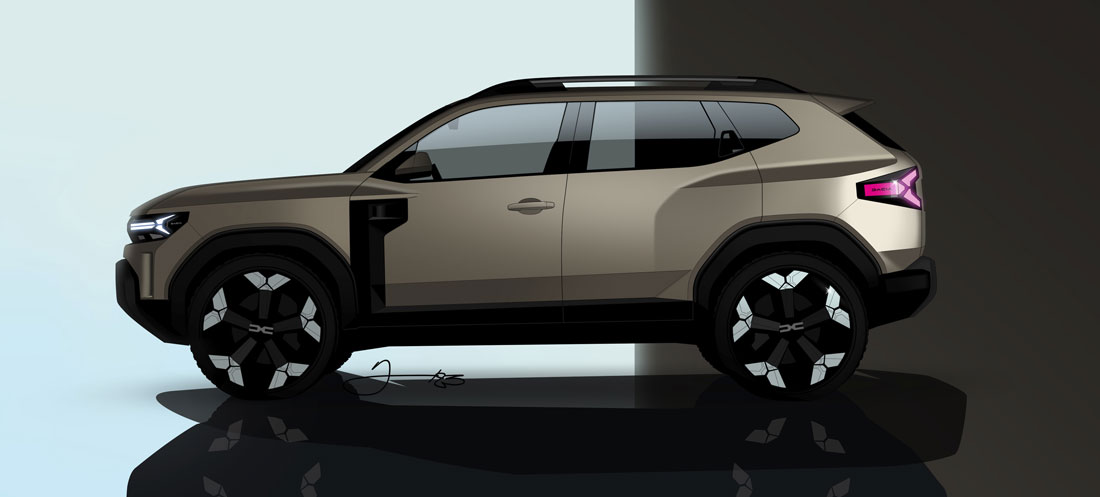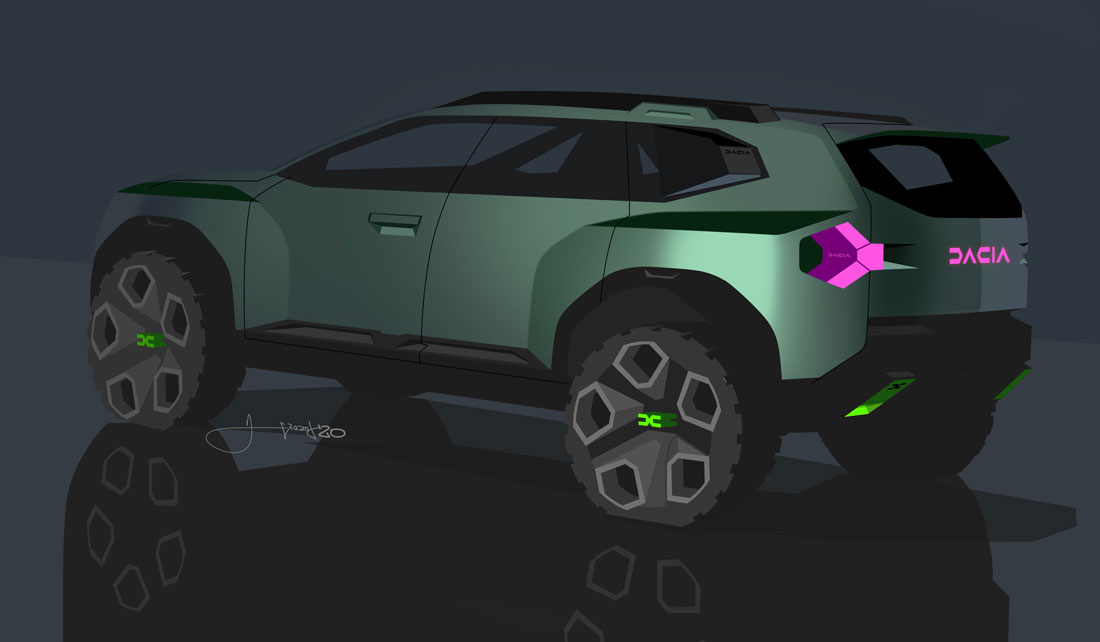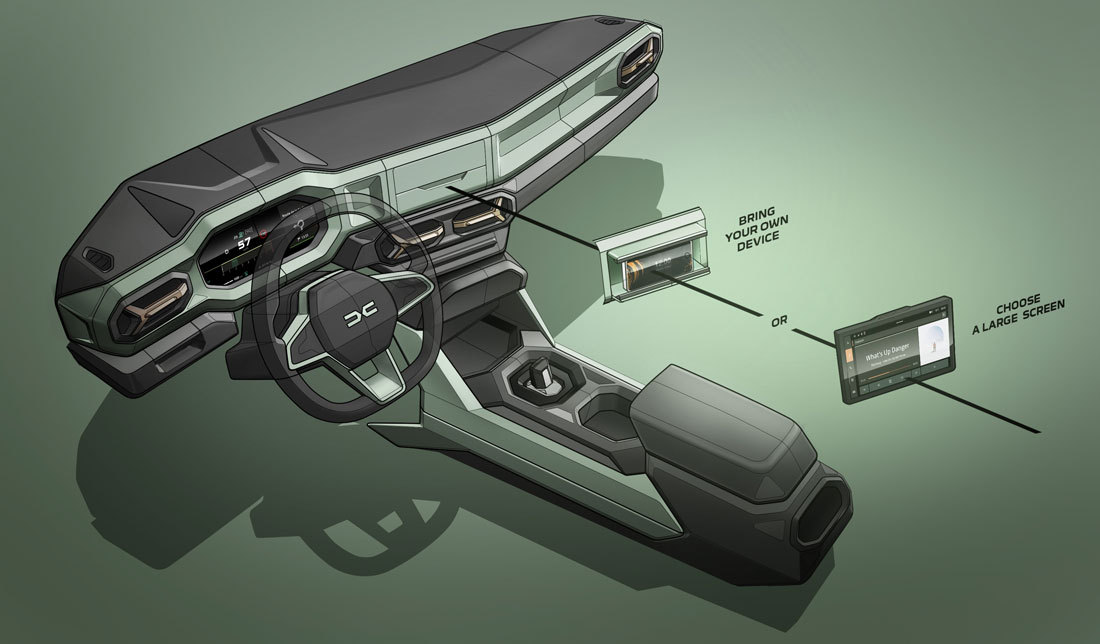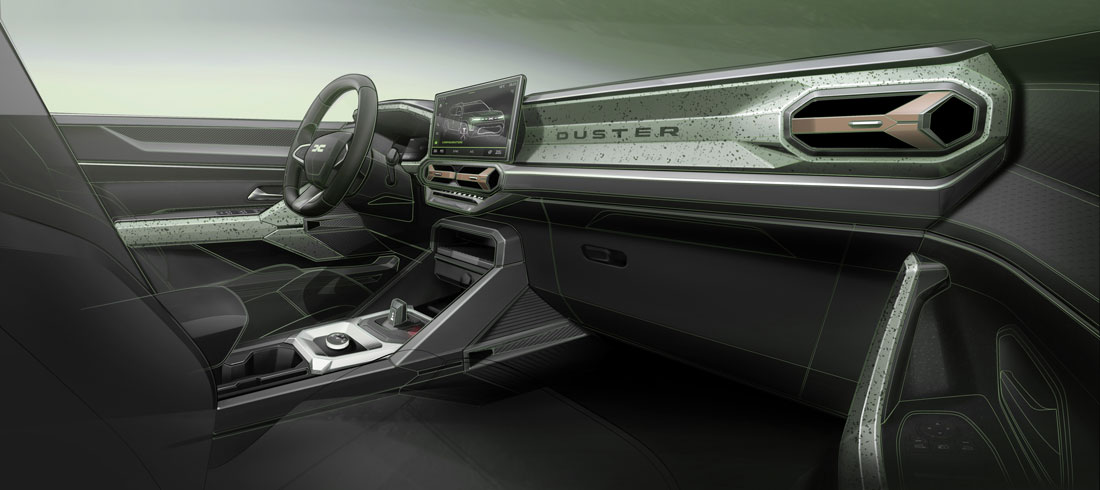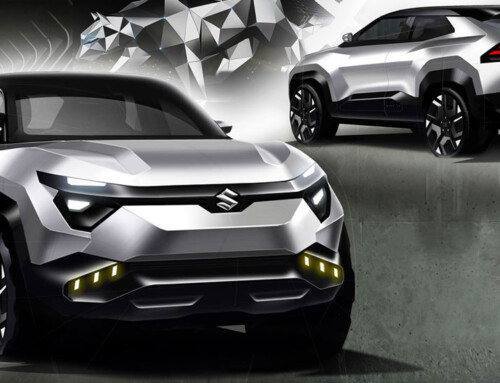“If it’s fine the way it is, why change it?”. That’s the question Dacia designers hear time and again when talking to Duster customers about how to evolve a highly successful model into a new generation with more up-to-date content. “We had to incorporate more technology, optimise consumption and comply with new standards, but it was immediately clear that the concept of great user-friendliness that has always characterised the Duster had to be preserved”, explains David Durand, Dacia’s design chief.
It all starts with proportions
The first task was to define the proportions based on the CMF-B platform, new for the Duster but already used in the latest iterations of the Sandero, the Logan and later the Jogger. “We have played around with some of the dimensions, but without enlarging the body too much”, Durand continues. “The height is slightly reduced, just as the spoiler is a little lower to improve aerodynamics and cut consumption. It had to be even more stable and robust, image-wise. The beltline is higher and the bonnet more horizontal; we wanted it to be visible from the inside so that the front volume can be perceived while driving”.
Mechanical look
The exterior boasts clean, sharp lines, combining simple yet distinct elements, with a very vertical front end, a wide tailgate and side protectors that project an aura of strength. A Y-shaped motif, echoed in both the interior and exterior lights, ties the design together. This graphic is accentuated by the new Dacia logo that up to now has been applied to models in the range as a “face-lift”, while the new Duster is the first car designed completely from scratch with this emblem. Durand describes it as “mechanical in appearance, reminiscent of the practicality and strength of a reliable work tool that is built to last”.
Recyclable materials
The image of the new Duster is further enhanced by an even more overtly outdoor vibe, underlined by a nature-inspired colour palette and side protectors that run along the entire lower perimeter, including the wheel arches, as well as the vertical element along the cut of the front door. The plastics are in Starkle, a new material developed by Dacia engineers, with visible dots announcing its partly post-consumer origin and the recycling symbol to highlight further recyclability.
No more chrome
Functionality and sustainability also prevail inside. “We have completely excluded chrome, due to its association with polluting processes, and leather because we felt it made little sense on board a Dacia for which we have a very high quality and durable TEP upholstery. The colour palette features khaki and dark green, or the copper accents of the Extreme trim, all very much inspired by nature and the outdoors, as the available outdoor accessories also show. These include the Sleep Pack, which provides a double bed, a small table and a storage area.
Designed for the outdoors
Even users who don’t intend to spend the night in the Duster will appreciate a clever accessory like the YouClip, a simple, functional attachment for a variety of small items, from a smartphone to a bag to a lamp, or whatever else they want to carry with them and keep to hand. We had seen it on the Dacia Manifesto: “That concept was done quickly while the Duster was still top secret; we wanted to show we were working on our new image. The YouClip is just the first of many accessories that we will make available on all Dacia cars in the future. So if you change models you will always be able to take your favourite accessories along with you”.
(Full article in A&D no. 265)


